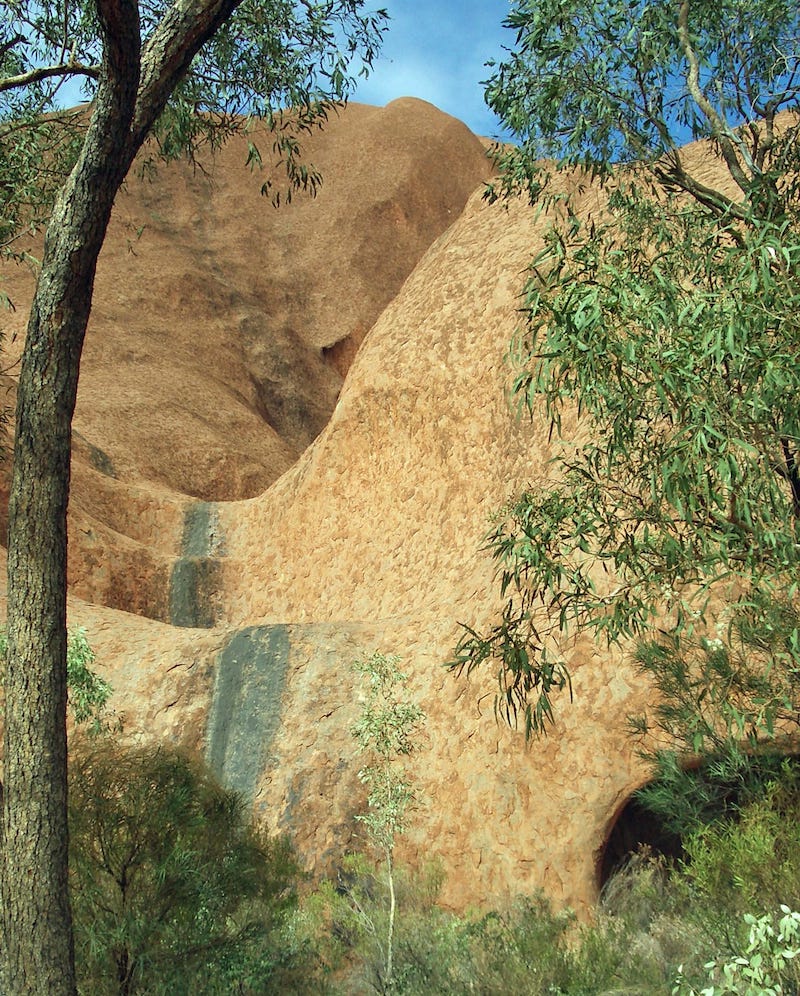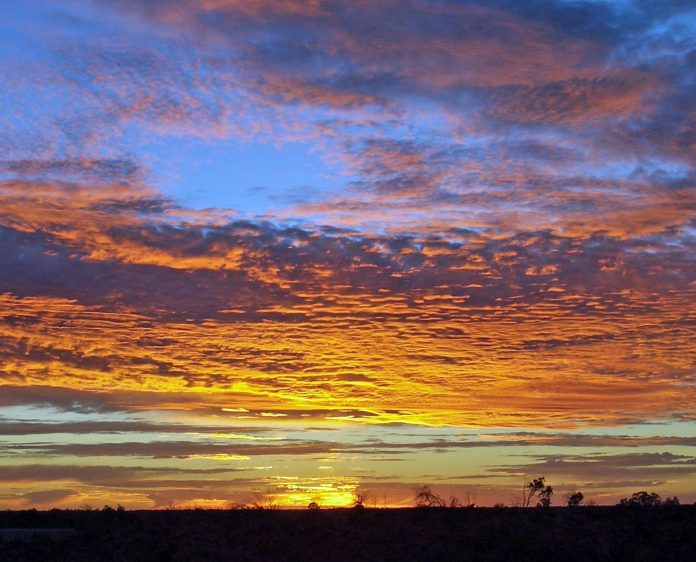Climbing Uluru has ceased. Tim Dawe reflects on a previous visit when he joins a shy Japanese girl on a walk around the rock.
I’m standing at the front of a luxury coach hurtling down the road towards Uluru, formerly known as Ayers Rock. As tour leader I’m briefing the increasingly excited teenagers shifting in their seats.
“Uluru is a sacred place and the Aboriginal custodians request that you show respect by not climbing it. Now, who still wants to climb the rock?” A wave of noise in a sea of hands indicates their intentions with all the subtlety of a two-fingered salute. The fingers in this case belong to 27 international students from 16 countries on their exchange year.
As the coach disgorges its multi-cultural cargo onto the main car park, I make a valiant plea for anyone to join me in walking around the rock. Even the tour assistant, my 25-year-old daughter and former exchange student, is scrambling for the rope to start the climb. But it seems not everyone saluted.
In the emptying carpark I am left looking down on the solitary Akiko, from Fukuoka in Japan. With few words spoken we fall into step – walking clockwise round the rock, starting with the Mala Walk.
It’s pleasing to leave the commercialised carpark but we are far from wilderness. Here, carefully placed, are metal bridges over creek beds, informative signs explaining special places and extensive use of stainless steel fencing, all of high quality. It’s a pleasant shady spot with tall grass around. The path meanders purposefully through clumps of gum trees, bush plums and wild fig. We get up close and personal with the untouchable rock. This area has special significance. The mala (hare wallaby) men, totemic dreamtime creatures, created this part of the rock.
I marvel at the sheer cliff face towering over me with tell-tale markings of periodic waterfalls crashing into a sculptured receptacle. It’s Kantju gorge and the women’s waterhole. Akiko is in quiet awe with this place. To fill the conversational vacuum, I explain some aspects of Aboriginal culture, pointing out that this fenced-off area is only for women for special rituals. I note some weathered feminine shapes in the smooth rock. Some things are best left unsaid.

Suddenly the topography changes and the Mala Walk ends abruptly like the final dusty stomp of a corroboree dance. We make a sharpish turn to a very long track. It swings away outlining the rock from a distance. It’s hard going along the red dirt track under a strong northerly sun. The ground is hard, dry and treeless; the view of the rock is wide-angle. Now lighter in colour, the wall of rock is severely weathered, with not just holes but large caves with jagged entrances. Seen from the air the rock is stratified in long parallel ridges that are replicated here. Looking up into the dark blue there are companion clouds in white ridges. There’s a connection of sorts.
It’s a long walk with little spoken. In our endurance a familiarity grows, not between Akiko and me, but with this mighty rock.
The next stop is transformative. A neat boardwalk leads us to a jumble of boulders. One in particular is gigantic. If forms the roof of a dark cave. Some would liken it to its cousin, the grotto, misconstrued perhaps given this place reaches back to the beginnings of time – man and ritual. Akiko and I enter to examine the faded rock art and instinctively speak softly; we can’t possibly know the purpose and symbolism but we feel it is a spiritual place. Someone has recently lit a fire on the sand floor and possibly continued an age-old ritual.
Akiko and I talk about what it can mean, without saying what it means to us. Something changes in Akiko – hard to pick – but it seems to me a meeting of Aboriginal mysticism and Japanese inscrutability.
Our next stop is Lungkata, a sacred waterhole and home to the water snake Wanampi. It’s cool and shaded with boardwalks through tall trees, and well-appointed for viewing. It’s beautiful. The rock here is like a smooth rollercoaster moulded in wet sand. It’s here we meet people lounging on benches, taking in the ambience of this inlet in the rock. It dawns on me how alone we have been. The base walk around Uluru is 10.6km. To this half-way point we have seen about five or six others.
We set forth on the last, long segment. What a difference south-facing makes. It is forested and, now with overcast skies, markedly differs from the north. Our return journey takes on a winding path, in and out of varied micro environments, all the way to ‘civilisation’, passing car parks, turn-offs to other tracks and, in the distance, the Uluru Cultural Centre. For some it can be long and arduous but there is easy access to special spots or the short walks of Mala, Mutitjulu, and Kuniya.
I don’t blame those boisterous students so eager to climb the rock. While steep and dangerous, climbing offers that very human thing; a challenge, a rowdy conquest. Walking offers us the quiet Australian rock. And of course, it’s the right thing to do. What our walk reveals is that it’s not just a rock, or even a gigantic monolith. For tens of thousands of years people have drawn on its unique facets and special environments for their sustenance – physical and spiritual. And to wonder, why?
My wonderment is not only seeing the rock in all its many moods and guises but also reflecting on this particular joint venture: Akiko and me. It’s about eschewing noisy group norms and striking out. It’s about quiet loners, and being alone. It’s about discovery and achievement. But most of all it’s about a sense of connection across cultures.
That, and a memorable walk with a Japanese girl I barely knew.





























